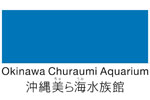Bleeker Award
Professor Lynnath Beckley, Chair of Bleeker Award Committee
The Scientific Advisory Committee for the Indo-Pacific Fish Conference offers an award for distinguished contributions to Indo-Pacific ichthyology. The award honours the father of Indo-Pacific ichthyology, Pieter Bleeker. The first Bleeker awards were presented to John Randall and Howard Choat in 2005 at the 7th IPFC, Taiwan. The second set of awards was made to Peter Sale and Bill Eschmeyer in 2009 at the 8th IPFC in Fremantle, Australia.
The Bleeker award is made to an ichthyologist for “an outstanding body of published work in Indo-Pacific ichthyology, mainly in systematics and ecology”. For the third round of the Bleeker Awards in 2013, there were three nominations in the ecology category and four in the systematics category. The nominations were reviewed by a committee comprising seven ichthyologists from Japan, Taiwan, Australia, France and USA and included a previous award winner. This year, the rankings were close but after collation of all the reviewers’ spread sheets, clear leaders appeared. The award for “an outstanding body of published work in Indo-Pacific ichthyology, mainly in systematics” was made to Dr. Gerald R. Allen. He was nominated by Prof. Philip L. Munday of James Cook University and there was an additional letter of support from Renny Hadiaty, Curator of Fishes at the Indonesian Institute of Sciences (LIPI).
The award for “an outstanding body of published work in Indo-Pacific ichthyology, mainly in ecology” was made to Dr. Jeffery M. Leis. He was nominated by Dr. Tom Trnski of the Auckland Museum in New Zealand with supporting statements from eight international ichthyologists.
We look forward to a new set of nominations for the 10th IPFC in French Polynesia in 2017.
Bleeker Award in Systematics
Dr. Gerald R. Allen’s Contribution to Indo-Pacific Ichthyology
Professor Philip Munday, James Cook University
Gerry Allen’s primary contribution to ichthyology has been the description of new taxa, both coral reef fishes and freshwater fishes of the Australia-New Guinea region. To date he has described 456 species, consisting of 324 coral reef fish species and 132 freshwater species. He has also described 13 new genera. The new taxa are representative of 33 marine fish families and 11 freshwater families. The family Pomacentridae is one family that he has specialised in, having described 104 species and 2 new genera. Similarly in the freshwater realm he has described 44 species of melanotaeniid rainbowfishes and one new genus.
Gerry has a research career spanning >40 years and for 24 of these years he was the Senior Curator of Aquatic Zoology at the Western Australian Museum where he was instrumental in building and maintaining their impressive fish collection. During his career he has published a remarkable 38 books, 395 scientific articles, and innumerable articles in popular magazines. One of his most notable achievements is the recent publication of the 3 volume Reef Fishes of the East Indies. This landmark publication presents the first comprehensive treatment of the region’s reef fish fauna in nearly a century. The book-set contains descriptions of each of the 2,631 currently known reef fish species from the region, habitat and distributional range of each species, and is illustrated with more than 3,600 colour photographs. There is information on morphological differences between species, variation between the sexes and life stages, as well as regionally-specific colour patterns. This is a monumental achievement that cements Gerry’s place as the leading expert on fishes in the world’s epicentre of reef fish biodiversity.
Gerry has also contributed greatly to understanding the biogeography of reef fishes in the Indo-Pacific region. He has conducted comprehensive surveys of reef fish diversity throughout the region and used this data, along with existing published data and museum records, to describe patterns of local and regional diversity and endemism. His estimates of regional species richness and endemism in the Indo-Pacific provided one of the few metrics through which faunal regions can be compared. More recently, with support of Conservation International, he has designed a computer mapping program for Indo-Pacific coral reef fishes. Distribution maps have been produced for more than 4,000 species and incorporated into analytical software that can produce comprehensive checklists of any area of the Indo-Pacific, regardless of size or location. The program relies heavily on the unparalleled number of comprehensive reef fish surveys that Gerry has conducted throughout the Indo-Pacific during the past 20 years. This data has already proved important for helping to set conservation priorities based on the biodiversity patterns and range distributions of reef fish species.
Gerry’s contributions have not been limited to fish systematic and biogeography. He has been involved in Conservation International sponsored surveys throughout Indonesia with the aim of helping to recommend areas for the establishment of MPAs. He helped to raise over two million US dollars for the West Papuan Conservation Program at a charity auction at Monaco in 2007. The naming rights to 10 new Papuan species that he was planning to describe were auctioned for this worthy cause. Some of the projects funded from the resultant money included the establishment of a community conservation education program, construction of a dedicated patrol vessel for policing the Raja Ampat Islands MPA, and university scholarships for Indonesian marine biological students.
Statement of Support for 2013 Bleeker Award
Dr. Tom Trnski, Auckland Museum
Jeff gave me my first opportunity as a recent graduate in late 1985 to pursue my ambitions to work in a field of marine biology. I assisted in writing and illustrating the second of several guides to the identification of fish larvae of the Indo-Pacific region. This was no trivial effort given the diversity of fishes from the region, the difficulty of matching larvae to a known taxon and the paucity of reliable published literature available. The guides that preceded and followed this publication remain to this day the most-cited references to identify fish larvae from this large biogeographic region
with the highest diversity of marine fishes. These publications supported the research of many others and stimulated new research on fish larvae.
But from the earliest years of his career Jeff did not limit his research to the taxonomy of fish larvae. The collections that furnished source material for the taxonomic publications came from hundreds of plankton samples collected in an effort to describe the distribution of fish larvae, especially in nearshore waters. He described taxon-specific distribution patterns, both vertically and horizontally, that varied with parameters such as distance from shore, distance from the surface and bottom, relative openness of lagoons, and diel state. At this point in time all fish larvae were assumed
to be weak swimmers and their distribution was considered mostly subject to ambient currents. The mechanisms to explain the observed distribution patterns remained discretely hidden in the black box that limited our understanding of the influence of the early life history stage of fishes on population dynamics. In the 1990s Jeff along with a number of colleagues decided there was no better way to shed light into this black box of knowledge than to follow fish larvae in the wild to record their vertical and horizontal distribution, and swimming speed. This novel technique, supported by laboratory experiments, was instrumental in the paradigm shift that followed – no longer were fish larvae passive participants in the lottery of ocean currents, but they could influence their trajectory and choose when and where they settled. These diminutive larvae could swim huge distances at remarkable speeds and had sensory abilities that were not considered possible until this time. Jeff was not the only researcher in this exciting field, but he remains among the most influential and no publication on the behaviour of fish larvae can avoid citing Jeff’s pioneering work. The consequence of this work is that dispersal and connectivity models that incorporate larval behaviour, in addition to the more traditional hydrodynamic factors, provide a more accurate approximation of the patterns observed.
The legacy of Jeff’s work in his 40-year publication record is 160 publications that includes books, book chapters, influential review articles, journal articles and, all too rare in most scientist’s output, articles written for a lay audience that explain complex scientific concepts.
His other significant legacy is his mentoring of several generations of marine scientists that have been supported, advised, encouraged and motivated by Jeff’s enthusiasm for his research interests. I count myself among this number. In all cases
Jeff has passed on the integrity in his scientific approach, and at all times with the greatest humility.
In preparing the nomination for the Bleeker Award, I enlisted the support of eight eminent scientists that have worked closely with Jeff or their own careers have been influenced by his work. They were supportive without reservation and all of them had the greatest respect for Jeff’s contribution over four decades. I thank these scientists, and informal comments from many others, for their support in preparing the nomination.



